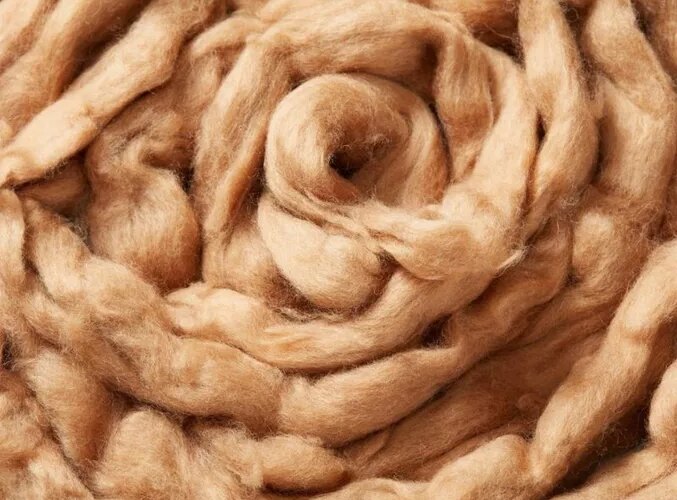Have you heard of Vicuna fabric? It’s one of the world’s priciest fabrics, symbolizing luxury and elegance. Join Fashion Bandung to learn about viscose fabric, its origin, and its outstanding qualities.
What is vicuna fabric?
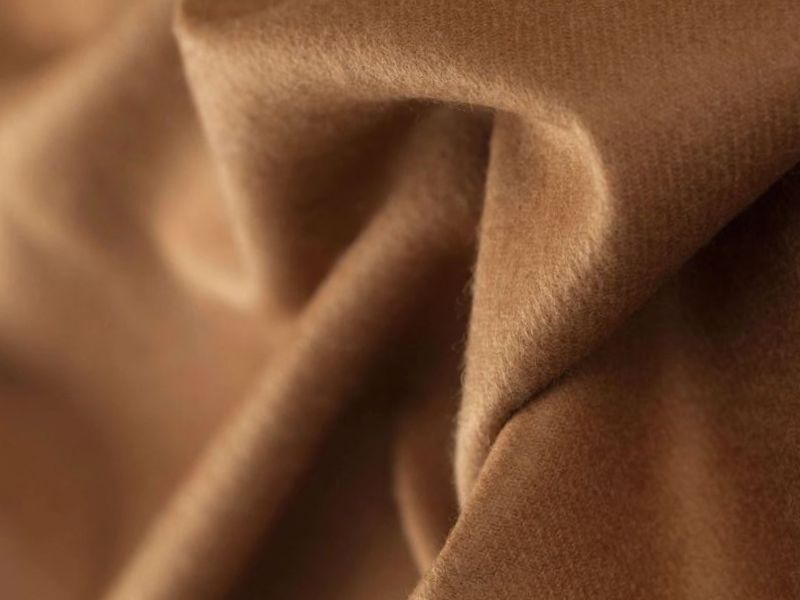
Vicuna fabric is a type of textile material that is highly esteemed for its exceptional qualities. It is obtained from the wool of the vicuna, a small camelid species native to the Andes region of South America. The fabric is prized for its softness, warmth, and luxurious feel, making it highly sought after in the world of high-end fashion and luxury goods. The wool of the vicuna is known for being incredibly fine and lightweight, allowing for the creation of delicate and exquisite fabrics. Vicuna fabric is considered to be one of the most exclusive and expensive fabrics in the world, due to the limited availability of the vicuna wool and the intricate process required to obtain and weave it into fabric.
Vicuna fabric is a textile made from the exceptionally rare hair of the Vicuna, a type of camel that resides in the Andes mountains of South America. The hair of the Vicuna is renowned for its luxurious qualities, including its softness, smoothness, insulation, and durability. As a result, Vicuna fabric is considered to be one of the most opulent and costly fabrics available globally.
Vicuna fiber is extremely lightweight and even finer than Cashmere goat hair. Its thickness measures only 12-14 microns, whereas Cashmere fiber is nearly 19 microns thick and wool can be as thick as 25 microns. The unique twisted structure of the silk fiber creates numerous microscopic air pockets, which not only provide insulation but also help retain heat. Additionally, Vicuna fiber is highly insulating and lacks the tendency to become electrically charged that is often found in other types of wool.
In order to obtain a sufficient amount of Vicuna fur for fabric production, a meticulous and specialized approach is required. The Vicuna, being delicate creatures, need to be nurtured and raised under specific conditions, ensuring their well-being throughout the process. Harvesting the fur must be conducted with utmost care and consideration, ensuring that the animal is treated respectfully and ethically.
The origin of Vicuna fabric
For centuries, the inhabitants of the Andes Mountains have maintained a profound relationship with the extraction of vicuna hair, which is extensively used in the creation of fashion and household items. Prior to the arrival of Europeans in South America, specifically from the 13th to the early 16th centuries, vicuna wool held immense significance in Inca culture. It served not only as a valuable commodity but also as a representation of their profound respect and admiration for the natural world.
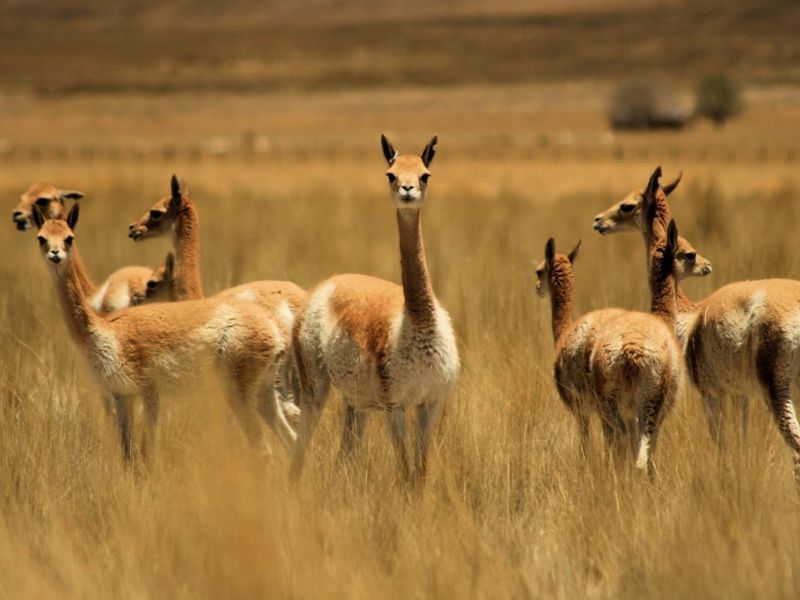
Vicuna fabric is obtained by collecting the hair from camelid animals.
In the remote and mountainous region of the Peruvian Andes resides a remarkable creature called the vicuna. This animal holds great value due to its luxurious and costly fur, making it highly sought after. Belonging to the llama family, the vicuna possesses a slim and graceful physique, standing at an impressive height of approximately 1.8 meters. What truly distinguishes this majestic creature is its captivating and sparkling mane, adding to its symbolic significance as an emblem of the highlands.
Vicunas possess a distinct characteristic in their fur, renowned for its exceptional softness and warmth surpassing even the luxurious cashmere. This remarkable attribute enables Vicunas to withstand the severe cold temperatures of the Andean mountains, located at a staggering altitude of 4,000 meters above sea level, by effectively preserving body heat.
Due to limited numbers and strict conservation policies, each Vicuna, a type of South American camelid, is only allowed to be sheared once every two years, and this can only happen about five times in its entire lifetime. This is because Vicuna populations are carefully managed to ensure their survival and prevent overexploitation.
To produce a single men’s shirt, it typically requires an average of 35 Vicunas. This is due to the limited amount of fleece each individual Vicuna produces during each shearing. This scarcity is what makes Vicuna fabric highly coveted and prized. In fact, no other fabric in the world can surpass it in terms of rarity and excellent quality.
In comparison, viscose fabric, which is often used as a cheaper alternative to luxury fabrics, cannot even come close to matching the exclusivity and luxuriousness of Vicuna fabric. Vicuna fabric is considered a symbol of extreme wealth and luxury. The intricate craftsmanship and painstaking process involved in obtaining and processing Vicuna fleece contribute to its high cost.

On average, it requires a total of 35 vicunas to be used in the production of a single shirt.
The situation in South America underwent a significant transformation with the arrival of the Spanish in the late 16th century. Unlike the traditional practice of shearing vicuñas for their wool, the Spanish adopted a more ruthless approach by using guns to hunt these animals. As a result, a staggering number of vicuñas were slaughtered by the 1960s, with only about 6,000 remaining in Peru. This drastic decline led to the species being classified as endangered. To address this crisis, the Peruvian government launched a campaign to safeguard and revive the vicuña population. They established their own protected area called Pampas Galeras, with the aim of preserving and revitalizing the vicuña population.
What makes vicuna fabric the priciest fabric globally?
A kilogram of Vicuna wool can be found on the market at a price ranging from $399 to $600. However, due to its limited supply, there are only about 4 tons of Vicuna viscose fabric exported annually to countries like Italy, UK, Germany, and the US. This scarcity and exclusivity contribute to the high demand for Vicuna wool products.
It is no surprise that celebrities and top fashion brands take pride in owning garments such as men’s jackets made from Vicuna fur. The luxurious quality and rarity of this fabric make it highly sought after in the fashion industry.
There are several reasons why Vicuna fabric is known as the most expensive fabric in the world. First and foremost, the wool comes from the Vicuna, a rare and protected animal found mainly in the Andes Mountains. These animals can only be shorn every two to three years, resulting in a limited supply of wool.
Additionally, Vicuna wool is extremely soft and lightweight, making it highly desirable for its luxurious feel. The fabric is also known for its excellent insulating properties, keeping the wearer warm in cold climates.
Furthermore, Vicuna wool is renowned for its durability and the ability to retain its shape over time. This ensures that garments made from this fabric will last for a long period, adding to their value.
Considering the combination of scarcity, exclusivity, luxurious feel, and exceptional properties, it is no wonder that Vicuna fabric commands such a high price in the market.
Harvesting vicuna is a highly challenging task.
The vicuña, a remarkable wild animal, is found exclusively in the Andes Mountains of South America. Its existence is quite rare, making it difficult to obtain vicuña fur in significant quantities. This scarcity not only amplifies the value but also elevates the price of vicuña fur.
Following the Spanish vicuña hunt that took place in 1660, a decree was established to execute anyone who was not of royal bloodline and was found wearing vicuña cloth. Consequently, the process of harvesting vicuña wool became exceedingly arduous and tightly regulated.
The process of harvesting Vicuna wool is incredibly intricate and time-consuming. Prior to being woven into wool, workers meticulously select the hair from the camel’s shoulders and neck. Similar to other rare animals, the hair of the Vicuña consists of two layers. The upper layer is rough, long, and comprised of coarse fibers, while the lower layer is smooth, short, and thick. After the harvesting process, the hair undergoes a meticulous combing procedure to completely separate and remove the coarse upper layer before it can be processed into yarn and finally woven into fabric. The end result of this laborious process is Vicuna wool, which possesses a stunning natural golden hue, earning it the nickname “the silk of God”.
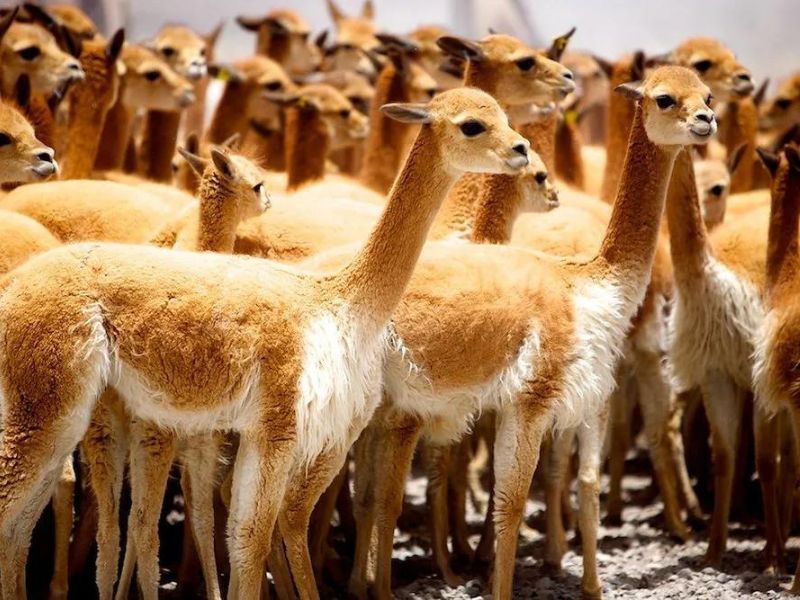
The process of harvesting Vicuna wool is extremely labor-intensive and requires significant effort and time.
Difficult production process
Another reason for the high cost of viscose fabric is its demanding manufacturing process. Viscose fabric is made from regenerated cellulose fibers, which are derived from wood pulp or plants. The production process involves several complex steps, including dissolving the cellulose, spinning it into fibers, and then weaving or knitting those fibers into fabric. This process requires specialized equipment and skilled technicians to ensure the quality and consistency of the fabric. Additionally, the dyes and chemicals used in the production of viscose fabric must also be carefully chosen and applied to avoid damaging the fibers or compromising the final product. Due to these factors, only a limited number of mills around the world have the capability and expertise to produce high-quality viscose fabric, resulting in higher production costs and ultimately a higher price for consumers.
Furthermore, the process of obtaining vicuna fabric involves meticulous care and consideration for the animal. This entails carefully nurturing and safeguarding the vicuñas in their natural habitat, and then delicately harvesting their fur without causing them harm. These factors contribute to the higher price of vicuna fabric.
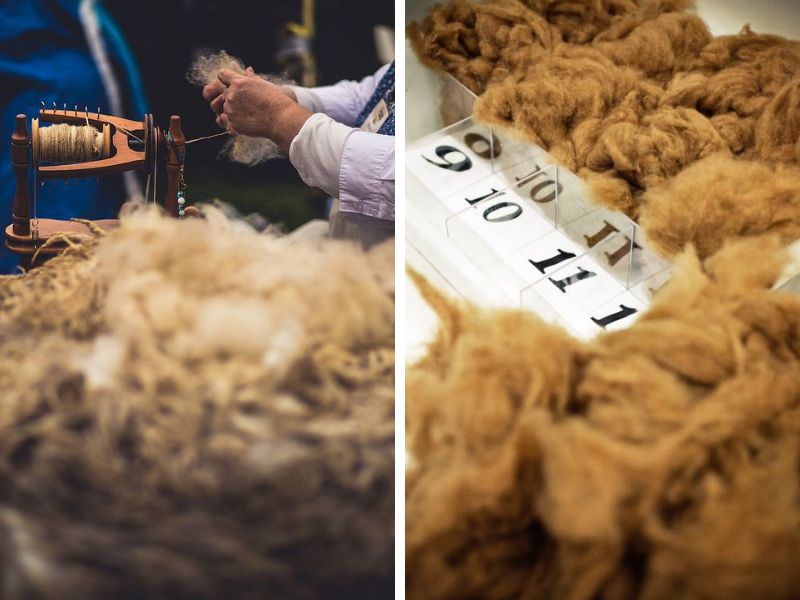
The production process of Vicuna fabric involves several intricate steps and techniques. From sourcing and shearing the rare Vicuna fiber to processing and weaving it into luxurious fabric, multiple stages are meticulously carried out to create this exquisite textile.
High quality smooth fabric
Vicuna fibers possess exceptional smoothness and softness that surpasses many other types of natural fibers. When Vicuña fabric is worn, it provides a luxurious and comfortable sensation due to its unparalleled softness and smooth texture.
Vicuña fibers are known for their exceptional lightness and thinness, which actually surpasses the quality of Cashmere. To put it into perspective, each individual Vicuña fiber has a diameter of only about 12 microns, equivalent to just 12 thousandths of a millimeter. This makes it an incredibly rare and exceptionally fine type of wool.
Furthermore, the interlocking properties of the Vicuña fibers contribute to its ability to retain heat and air. This is primarily due to the high density of these fibers, which allows them to effectively trap warmth and create a layer of insulation.
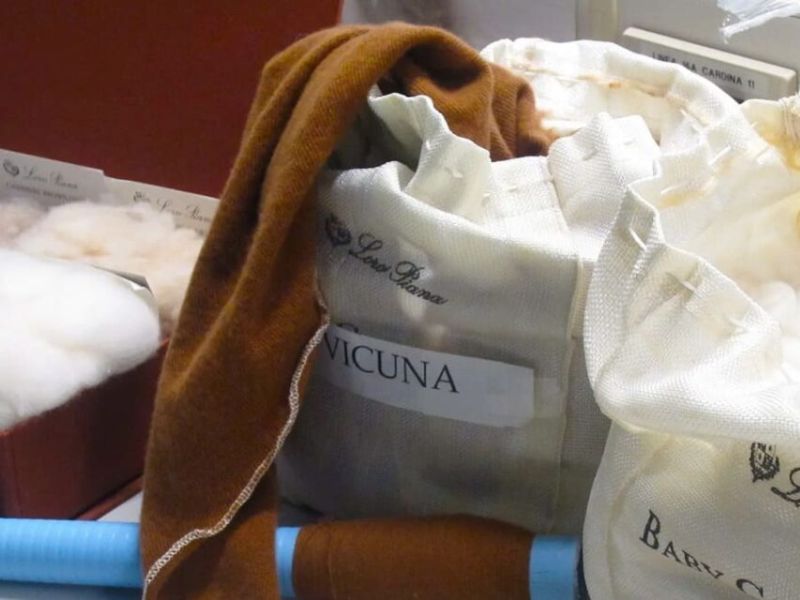
Vicuna hair stands out for its exceptional smoothness and softness, making it superior to other types of hair.
The remarkable benefits of Vicuna fabric are unparalleled.
- Smoothness and softness: Vicuna hair is finer and softer than most other natural fibers, creating a smooth and comfortable feeling when in contact with the skin.
- Insulation and ventilation: Vicuna fabric has good insulation, keeping the body warm on cold days and cool on sunny days. At the same time, it also has good breathability, helping the body to always be ventilated and not hot.
- Strength and elasticity: Although soft, vicuña fabric is still durable and does not stretch after use, keeping the product in its original shape and form.
- Adaptability to many environments: Vicuña fabric is adaptable to a wide range of weather and environmental conditions, from hot, dry climates to cold climates in the high mountains.
- Natural colors and light: Vicuña fibers have the ability to absorb color and reflect natural light well, creating a natural and luxurious beauty for products made from this fabric.
- Antibacterial and anti-allergic properties: Vicuña fabric has natural antibacterial properties, helping the wearer feel comfortable and confident in all situations. At the same time, it also causes fewer skin allergy problems than some other fabrics.
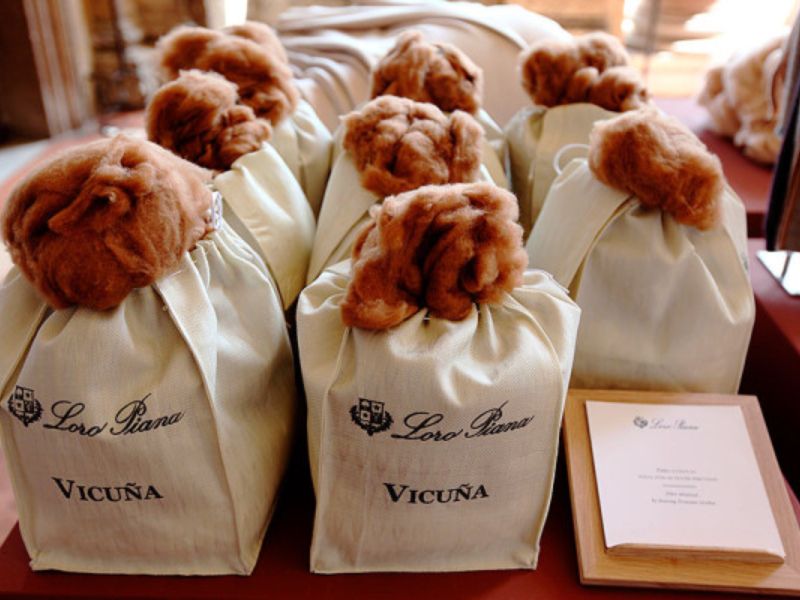
Vicuna fibers are renowned for their exceptionally smooth and soft texture, surpassing that of other fabrics.
In-depth comparison between Vicuna and cashmere fabrics, highlighting their differences and similarities.
In general, both Vicuna and Cashmere fabrics provide a luxurious and comfortable experience. However, Vicuna fabric is often regarded as more prestigious because of its exceptionally fine quality and scarcity. It is crucial to note that Vicuna fabric is significantly more expensive than Cashmere. To provide a comprehensive understanding, let us delve into a detailed comparison between these two fabrics, considering aspects such as their origins, material characteristics, fineness, and market value.
1. Origin:
The first point to consider is the origin of the subject under discussion.
- Vicuna Fabric: Vicuna hair is obtained from the Vicuna, a rare animal that lives in the Andes mountains of South America.
- Cashmere Fabric: Cashmere fiber is collected from Cashmere goats, which live mainly in the highlands of Central Asia and India.
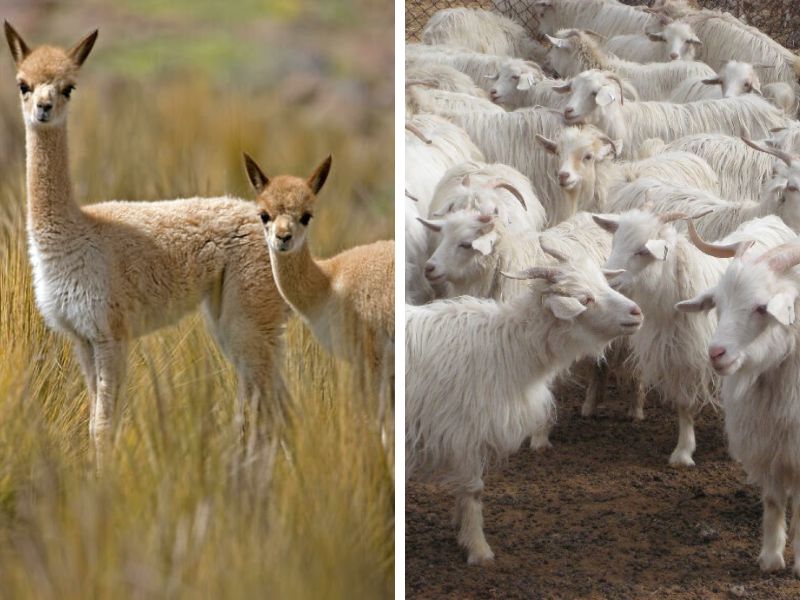
The origin of this product can be traced back to the Vicuna deer and Cashmere goat. These two animals are the primary sources for obtaining the material used in this product.
2. Characteristics:
The second point to consider is the various characteristics associated with the subject. These attributes or features provide a deeper understanding and insight into the topic. By examining these characteristics, we can gain a comprehensive perspective and analyze the subject from different angles. Understanding the distinguishing traits, qualities, or properties associated with the subject allows us to appreciate its uniqueness and complexity. Through a detailed exploration of these characteristics, we can develop a more thorough understanding and form well-informed opinions or conclusions.
- Vicuna Fabric: Vicuna fibers are famous for their smoothness and softness, creating a smooth and comfortable feeling when in contact with the skin. Vicuna fabric has good insulation, breathability and elasticity, suitable for many weather conditions.
- Cashmere: Cashmere fibers are also very soft and comfortable, but are generally less fluffy than Vicuna. Cashmere also has insulating and breathable properties, but may not be as stretchy as Vicuna.
3. Smoothness refers to the quality or state of being smooth. It is a characteristic that describes how an object or surface feels or appears to the touch. When something is smooth, it lacks roughness, bumps, or irregularities. Smoothness can be perceived visually or through tactile sensations, and it can vary in degrees from extremely smooth to slightly smooth. It often adds a sense of elegance, refinement, and comfort to the overall aesthetic or functionality of an object or surface.
- Vicuna: Due to its fine texture, Vicuna fibers are typically thinner than Cashmere (12-14 microns thick, compared to Cashmere’s nearly 19 microns, and sheep’s wool’s up to 25 microns). The twisting of the fibers creates countless microscopic air pockets, providing maximum insulation and warmth, as well as being extremely electrically insulating (compared to other wools which tend to be electrically charged).
- Cashmere Fabric: Although soft, Cashmere fibers are generally not as fine as Vicuna fibers.
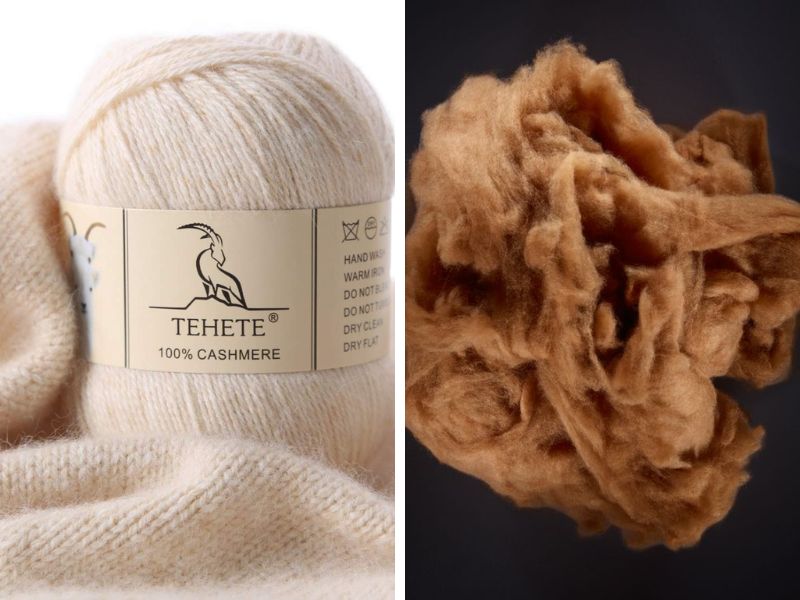
There are two fabrics made from different materials.
4. The market price refers to the current value of a product or service in the market. It is the price at which buyers are willing to pay and sellers are willing to sell. The market price is determined by various factors such as supply and demand, competition, production costs, and consumer preferences. It is an important indicator for businesses and individuals as it helps in making pricing decisions, assessing profitability, and evaluating market trends.
- Vicuna Fabric: Vicuna fabric is considered the most expensive fabric in the world due to its rare origin and high fineness, often costing much more than Cashmere.
- Cashmere: Cashmere is also highly valued, but is generally not as expensive as Vicuna and is still considered a luxury fabric.
Vicuna fabric is not just any fabric, but rather a symbol of opulence and sophistication. It may come with a hefty price tag, but the advantages and benefits of this viscose fabric are truly exceptional. This makes it the perfect option for individuals seeking to exude class and elegance through their attire.
“Fashion Bandung is a clothing line that specializes in fashionable clothing for men. Our wide range of stylish clothing options caters to the fashion-forward and trend-savvy individuals. With a focus on providing high-quality garments, Fashion Bandung aims to offer men a variety of options to express their personal style and enhance their overall look. Whether you’re looking for casual wear or formal attire, Fashion Bandung has got you covered. Our collection includes trendy and fashionable items that are designed to keep you ahead of the fashion curve. Explore our selection and discover the perfect outfit to elevate your style game.”
“Click here to view additional information: “

